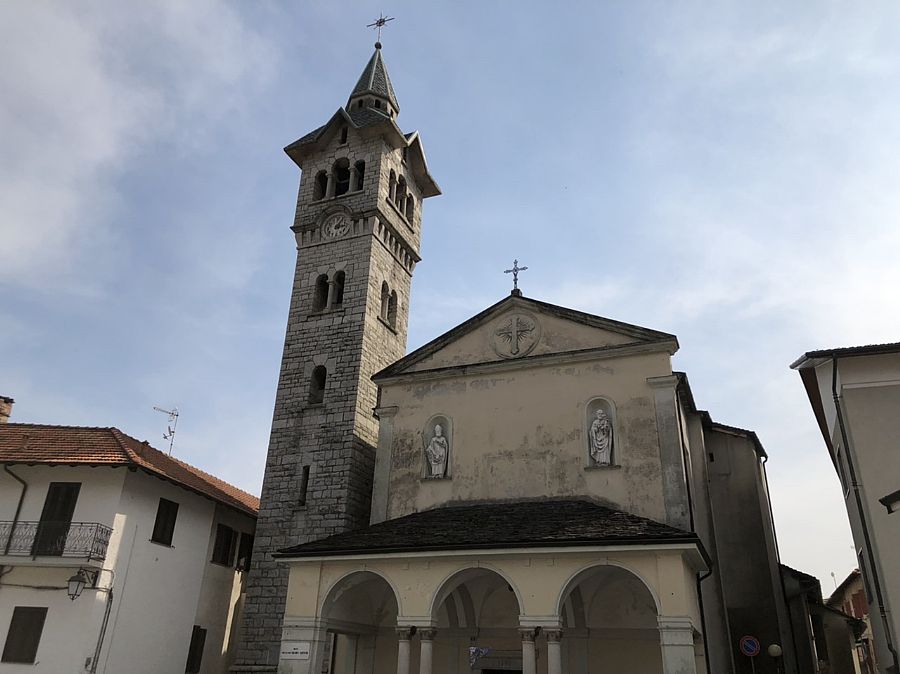Chianciano TermeLoretta Gallorini

The history of Chianciano begins with the Etruscans. Even before the advent of the Roman domination the importance of the water as a beneficent care for the body was well known to Clancianum, name of Chianciano at that time.
Today Chianciano is structured on two inhabited complex: Chianciano Vecchia or Country and Chianciano Terme, that developed at the end of the XIX century and during the first years of the last century.
The first Advertising Manifesto of Chianciano dates back to 1895, it promoted the two spas: Acqua Santa e Santa Agnese, absorbed into the parks and into the gardens of the town.
Chianciano Vecchia, clearly distinguishes itself from the modern agglomeration, it is situated on a hill and shows part of the medieval walls and of its ancient urban scheme.
You enter the historical centre from Viale Dante passing under Porta Rivellini.
Immediately on the left just after the arch, you find the church of the Immacolata, in this place existed a hospital that is remembered since 1272. The high altar and the two side altars date back to1580.
The paintings that were here: the Annunciation by Niccolò Betti, the Sacred Family by Galgano Perpignani and the fresco of the Madonnaof the Peace by Luca Signorelli are currently at the Museum of the Collegiate.
At the end of Via Casini the Tower of the clock rises elegant and sober with its medieval structure that has been rehandled in different epoches, there is set the coat of arms of Medici.
Along Via Casali, leaning from the walls, it appears a vast and beautiful panorama on the valley of the Volpaie dominated by the two peaks of the Amiata Mountain and the Cetona Mountain.
As you cross a brief slope you arrive at Piazza Matteotti where still the palaces of the age of the lords of Chianciano and the building of the Town Hall overlook, in the centre a beautiful fountain with hexagonal plant rises, it was realized in the XVIII century; from the left side of the square you enter Castello Manenti.
Take Via Solferino and you come in the “piazzolina” of the Soldiers where you see The Archpriest,’s palace that entertains the Museum of Sacred art of the Collegiate. The altarpiece representing St. Giovanni Battista that sustains Chianciano showing the ancient order of the town is also very interesting.
Take back Via Solferino and you arrive in the square in front of the Collegiate, or church of St. Giovanni Battista. Of the ancient thirteenth-century construction just the beautiful Romanesque portal remains, characterized only by an ornamental motive with concentric arches. It was built in the first half the XIII century on a precedent hexagonal construction.
In the left chapel a fresco of the XVI century with the Presepio (Crèche), a fourteenth-century Crucifix and a wooden sculpture with the died Christ by Joseph Paleari.
Our run continuing through Via della Croce, we find the church of the Company, that preserves an interesting fresco of the XV century that represents The betrayal of Judas and the Capture of Jesus Christ and other images representing the Saints.
You then come down to the Porta del Sole, made of bricks with two side towers. Gone beyond the Porta del Sole, after few meters, the temple of the Madonna of the Rose rises, the most beautiful church of Chianciano built among 1585 and 1599. Baldassarre Lanci da Urbino was the inventor of the complex that shows its Greek cross structure.
The church takes the name from the inside preserved fresco, that represents the Madonna that hands a rose to her Child, work of a Sienese artist of the XV century, inside there is also another fresco, the so-called Madonna of the Jails a Sienese work of the fourteenth century.
Going up again toward the historical centre take Via XXV Aprile walking along the walls you are again in Viale Dante where we can conclude our visit going to the Archaeological Civic Museum of the Waters.
Have a look at our apartment rentals in Chianciano Terme.

 Amalfi Coast
Amalfi Coast Sorrento Coast
Sorrento Coast Tuscany
Tuscany Cilento National Park
Cilento National Park Lake Como
Lake Como Rome and Latium
Rome and Latium Umbria
Umbria Capri and Ischia
Capri and Ischia Venice
Venice Puglia (Apulia)
Puglia (Apulia) Liguria
Liguria Sicily
Sicily Lake Maggiore
Lake Maggiore Lombardy
Lombardy Sardinia
Sardinia Lake Garda
Lake Garda Abruzzo and Marche
Abruzzo and Marche Calabria
Calabria

